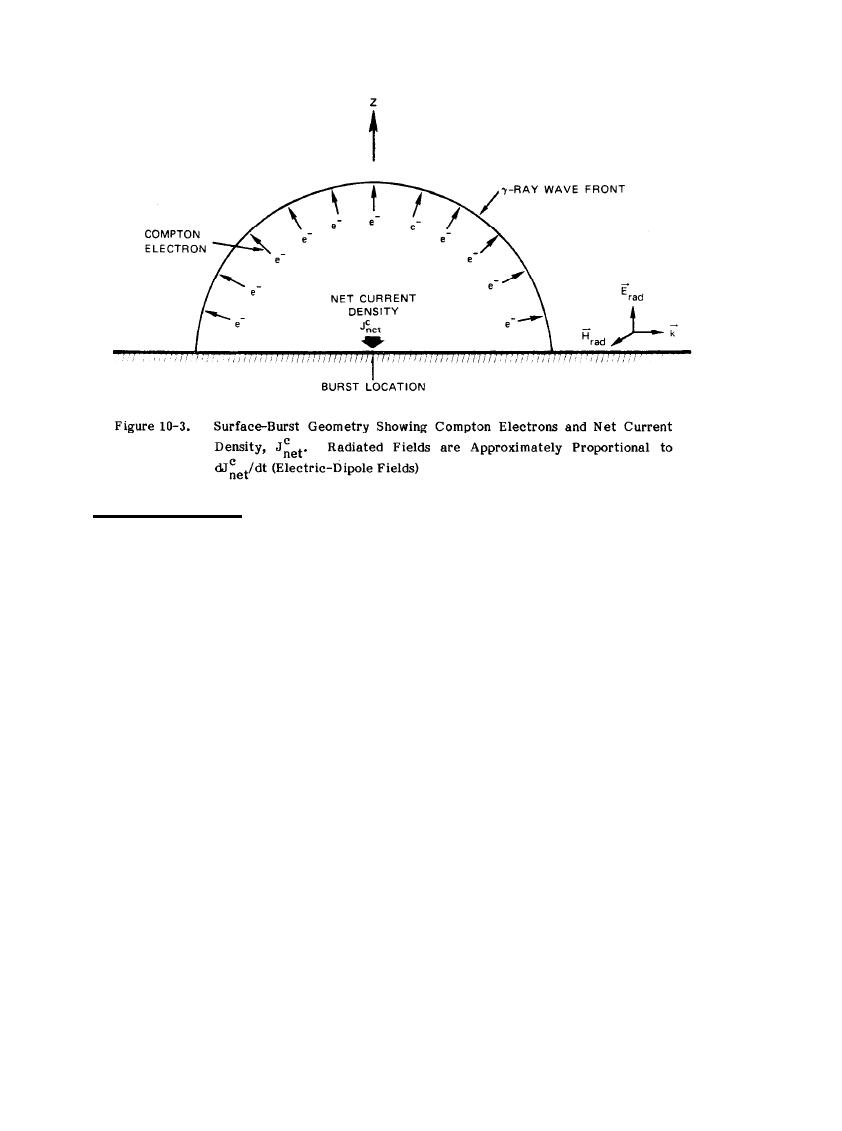

Custom Search
|
|

|
||
 MIL-HDBK-419A
10.2.3 Other EMP Phenomena.
The high-altitude EMP (HEMP) is, by far, the most important form of EMP for communication facilities because
of its large area of coverage. However, in addition to the HEMP and the surface-burst EMP, a few other
electrical effects should be mentioned. System-generated EMP (SGEMP) is produced when the high-energy
particles (mostly gamma- and X-ray photons) produced by the bomb interact directly with the system structure.
These interactions knock electrons out of the structure, which causes current on the structure and potential
gradients between the structure and the removed charge. The structure of interest may be system wiring or
cable shielding; the current and potential differences are then on system circuits. (Because this EMP is often
generated inside the system, it is sometimes called internal EMP (IEMP). SGEMP is of major concern for
satellites and other space vehicles because the gamma- and X-rays from the high-altitude bomb can travel
great distances without colliding with another particle or structure. SGEMP is also a consideration for surface
systems whose blast and thermal resistance permits them to operate inside the source region.
Another important electrical effect is known as transient radiation effects on electronics (TREE). The
radiation emitted by the nuclear explosion can interact with components of electronic circuits to produce
ionization or atomic displacements in the semiconductor and insulating materials. The effects range from
momentary changes in conductivity to permanent changes in crystal lattices. Semipermanent effects, such as
trapped charges in insulating materials, may also occur. TREE may upset memories, produce spurious circuit
responses (logic errors), drive circuits into abnormal states, or cause permanent damage. As with most other
EMP forms, damage caused by TREE can also occur through secondary effects. Self-inflicted damage may be
triggered by abnormal conductivity in a junction that allows stored energy to be released. In addition, one
circuit may be caused to instruct another circuit or another part of the system to perform some forbidden act
that destroys the circuit or even the system.
10-4
|
 |
|
 |
||